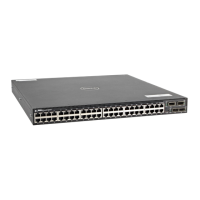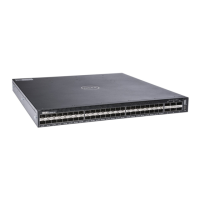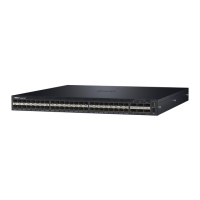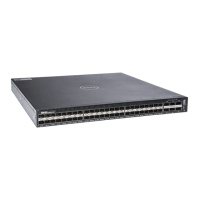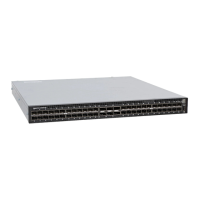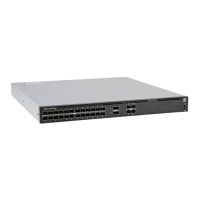You can determine if an ASBR is in a directly connected area (or not) by the flags.
For ASBRs in a directly connected area, E flags are set. In the following example,
router 1.1.1.1 is in a directly connected area since the Flag is E/-/-/. For remote
ASBRs, the E flag is clear (-/-/-/).
Example
Dell#show ip ospf 1asbr
RouterID Flags Cost Nexthop Interface Area
3.3.3.3 -/-/-/ 2 10.0.0.2 Gi 0/1 1
1.1.1.1 E/-/-/ 0 0.0.0.0 - 0
Dell#
show ip ospf database
Display all LSA information. If you do not enable OSPF on the switch, no output is generated.
S4810
Syntax
show ip ospf process-id [vrf vrf-name] database [database-
summary]
Parameters
process-id Enter the OSPF Process ID to show a specific process. If no
Process ID is entered, command applies only to the first
OSPF process.
vrf vrf-name Enter the keyword vrf and then the name of the VRF to view
LSA information on OSPF processes corresponding to that
VRF.
database-
summary
(OPTIONAL) Enter the keywords database-summary to the
display the number of LSA types in each area and the total
number of LSAs.
Command
Modes
• EXEC
• EXEC Privilege
Command
History
This guide is platform-specific. For command information about other platforms,
refer to the relevant Dell Networking OS Command Line Reference Guide.
The following is a list of the Dell Networking OS version history for this command.
Version 9.4.
(0.0)
Added support for VRF.
Version 9.0.2.0 Introduced on the S6000.
Version
8.3.19.0
Introduced on the S4820T.
Version 8.3.11.1 Introduced on the Z9000.
Version 8.3.7.0 Introduced on the S4810.
1202
Open Shortest Path First (OSPFv2 and OSPFv3)
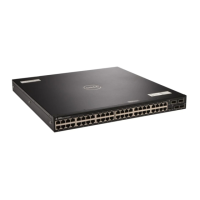
